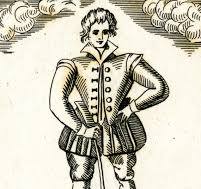The Picaresque Novel
The Picaresque Novel is an adventurous tale of a picaro who wanders from one place to another, from one country to another, or from one town to another. The word Picaresque is derived from the Spanish word ‘Picaro’ which means a ‘rogue’ a knave or a dishonest man.
The novelist gets an opportunity to introduce a variety of characters and incidents. The picture is satiric, but the novelist does not aim to reform the character. He only wants to delight and entertain us.
Its Origin:
The Picaresque novel is supposed to have originated in Spain. It was a reaction to the chivalric romance of that period. The earliest books of this period are ‘Lazarillo De Tormes’ (1594) and ‘Guzmán de Alfarache’ (1599).
Influence of Picaresque Novel in English Literature:
 The French picaresque novel, ‘Gil Blas of Le Sage’ had a profound impact. The credit for being the first writer of this genre goes to Thomas Nash. His ‘The Unfortunate Traveller’ or ‘The Life of Jack Wiltons’ is the first picaresque or rogue novel in English Literature.
The French picaresque novel, ‘Gil Blas of Le Sage’ had a profound impact. The credit for being the first writer of this genre goes to Thomas Nash. His ‘The Unfortunate Traveller’ or ‘The Life of Jack Wiltons’ is the first picaresque or rogue novel in English Literature.
It influenced various literary forms and contributed to the evolution of the novel as a genre. The realistic portrayal of society and the anti-heroic protagonist became central themes in later literary works. The picaresque tradition paved the way for modern realism and influenced notable writers like Daniel Defoe, Henry Fielding, and Mark Twain.
Chief characteristics of a Picaresque Novel:
- It should have a Picaro as the central figure, who shifts to different places to earn his livelihood.
- The plot is loose and has no end. The plot is episodic, and the incidents are thrilling or sensational.
- Characters from all strata of society are introduced due to societal setting.
- A picture of contemporary society is represented which is realistic and complete.
- The writer satirises various faults of the character and society, but the sole purpose is to delight and entertain us.
- The picaresque novel is not moral in its theme.
Major Writers and Works
- Lazarillo de Tormes (1554)
- Author: Anonymous
- Summary: Often considered the first picaresque novel, it tells the story of a young boy, Lázaro, who serves various masters, each representing a different facet of corrupt society. Through his experiences, Lázaro learns to survive by his wits.
- Guzmán de Alfarache (1599)
- Author: Mateo Alemán
- Summary: This work follows the life of Guzmán, a rogue who narrates his misadventures and moral reflections. It is noted for its depth of character development and social critique.
- The Life of Lazarillo de Tormes and of His Fortunes and Adversities (1554)
- Author: Anonymous
- Summary: The story centers on Lázaro, a poor boy who overcomes various hardships through cunning. This novel set the foundation for the picaresque genre with its episodic structure and satirical tone.
- The Swindler (El Buscón) (1626)
- Author: Francisco de Quevedo
- Summary: This novel narrates the life of Pablos, a young man from a poor family who tries to improve his social standing through deceit and crime. Quevedo’s work is known for its sharp wit and dark humor.
- The Adventures of Gil Blas of Santillane (1715-1735)
- Author: Alain-René Lesage
- Summary: Though French, this novel follows the Spanish picaresque tradition. It chronicles the life of Gil Blas, a young man who rises from humble beginnings to become a trusted advisor to the king, all the while retaining his naughty ways.
- The Adventures of Roderick Random (1748)
- Author: Tobias Smollett
- Summary: This English novel traces the life of Roderick Random, a young Scotsman, and his adventures across various countries. Smollett’s work highlights the influence of the picaresque form on English literature.
- The Adventures of Huckleberry Finn (1884)
- Author: Mark Twain
- Summary: Although a later work, Twain’s novel reflects the picaresque tradition through the character of Huck Finn, a boy who embarks on a journey down the Mississippi River. The novel explores themes of freedom, friendship, and societal hypocrisy.
- 8. Fielding’s Tom Jones is also built on the picaresque world. Tom Jones is an illegitimate child with no parents to look after him. The novel is a story of his adventures.
- 9. Charles Dicken’s, ‘The Great Expectations’, ‘Pickwick Papers’ and ‘Oliver Twist’ are also Picaresque in nature.
The picaresque novel, with its focus on the experiences of a roguish hero in a corrupt society, continues to be a significant literary form, influencing countless works and remaining relevant through its timeless exploration of human nature and societal critique.
